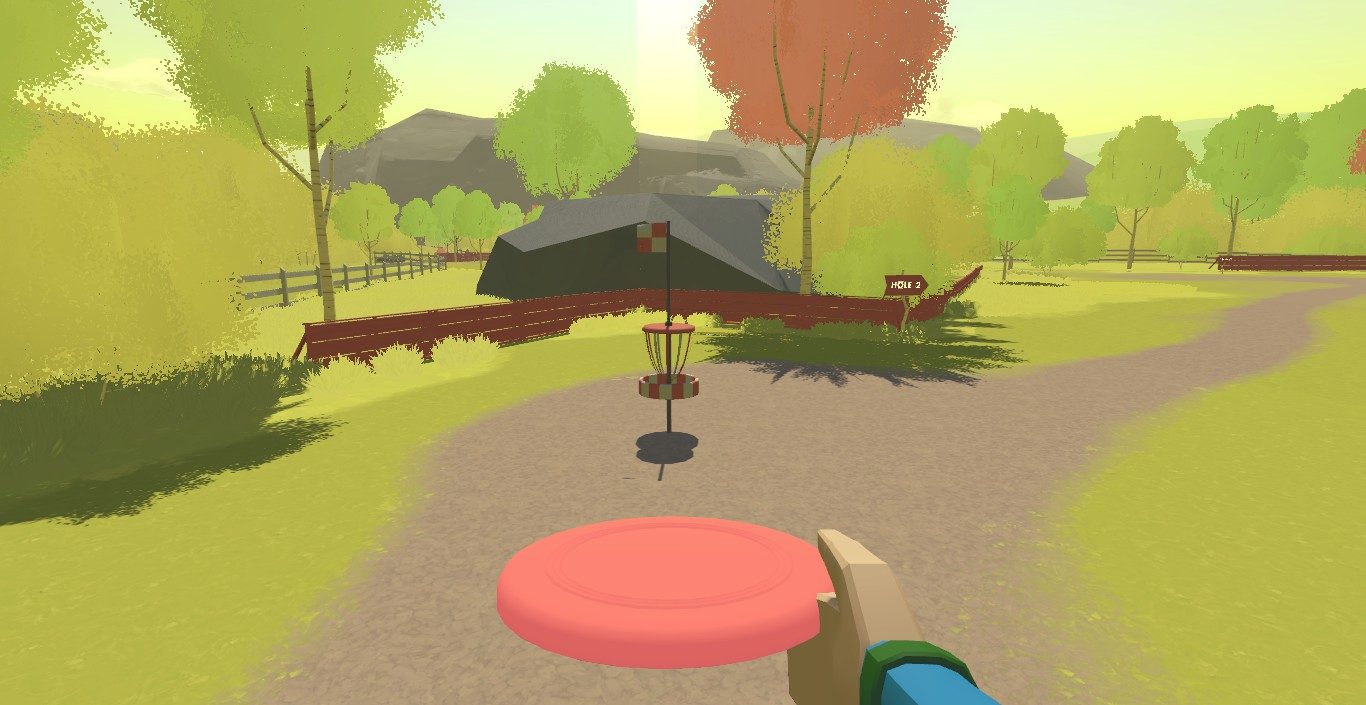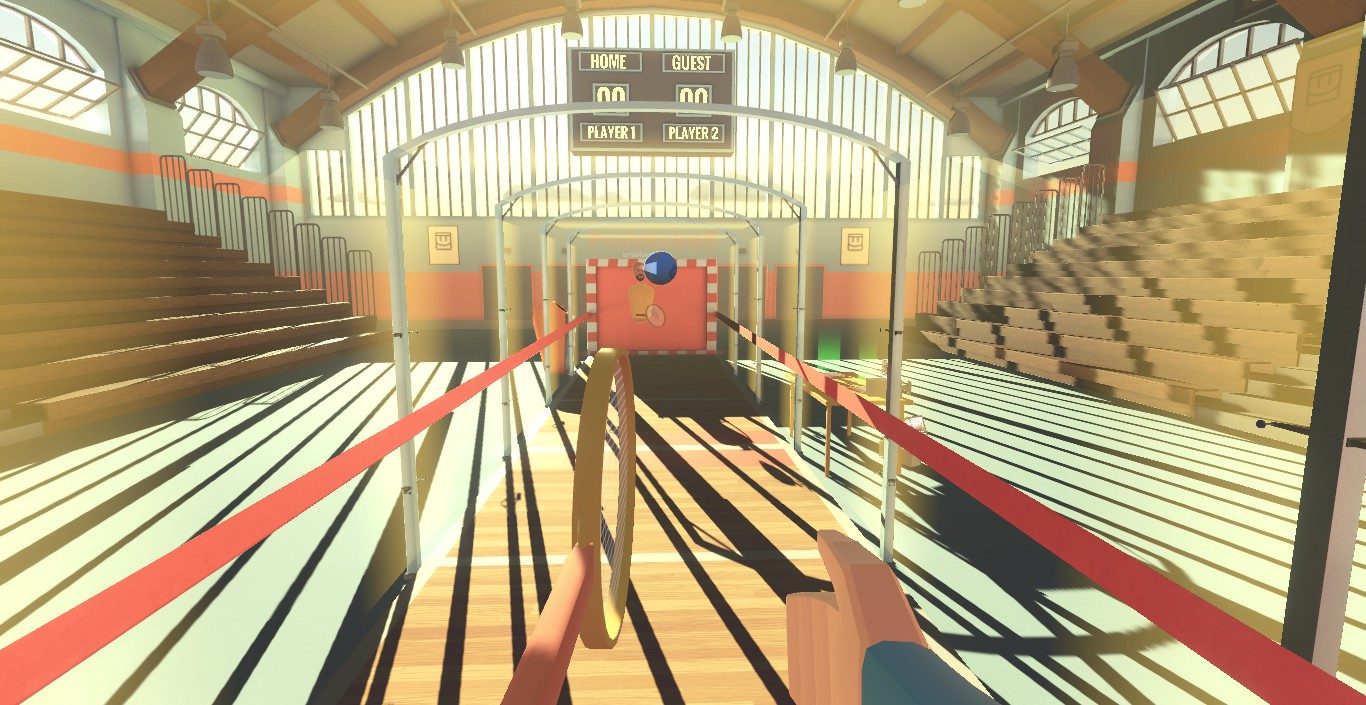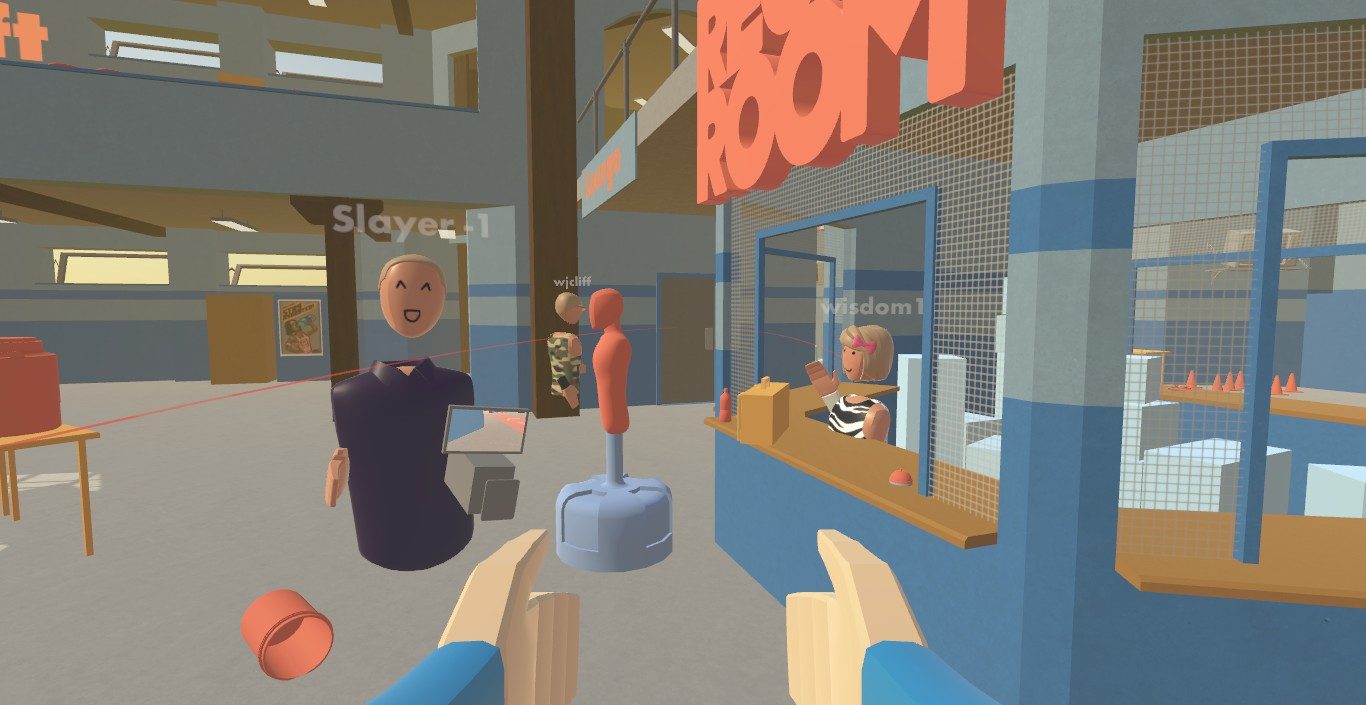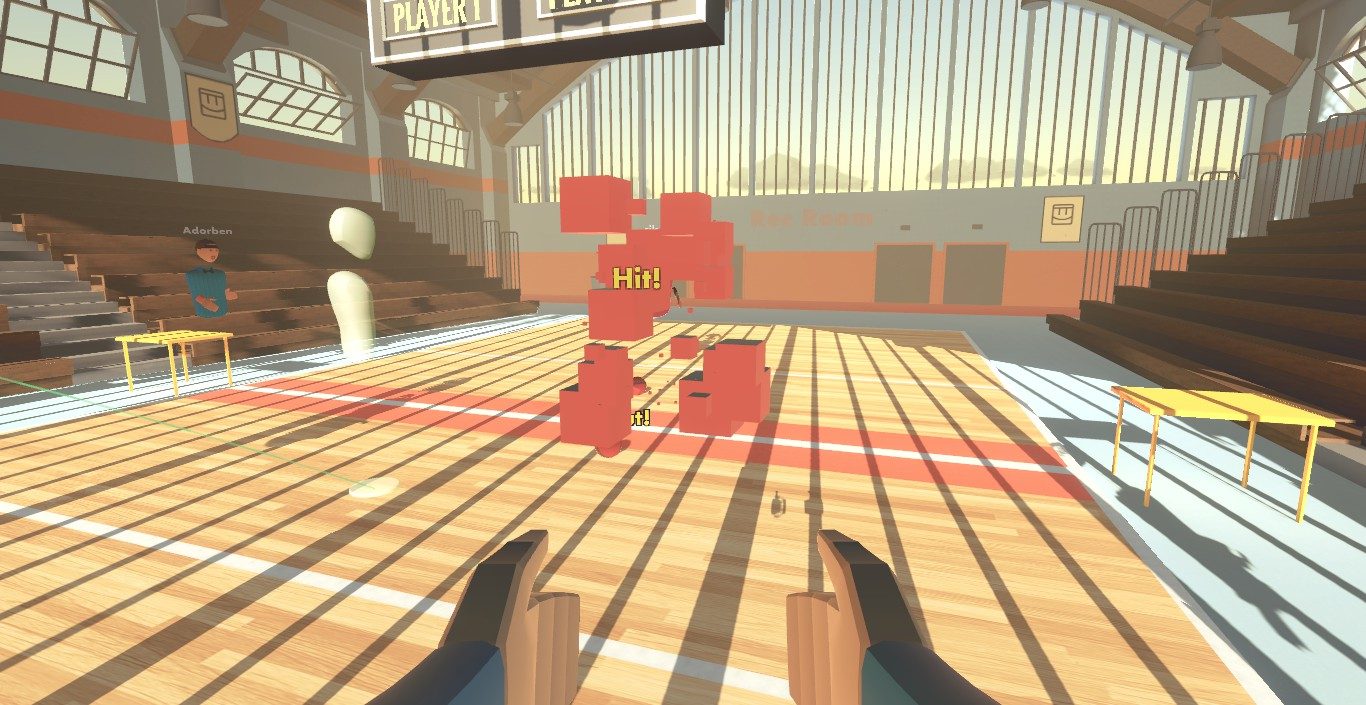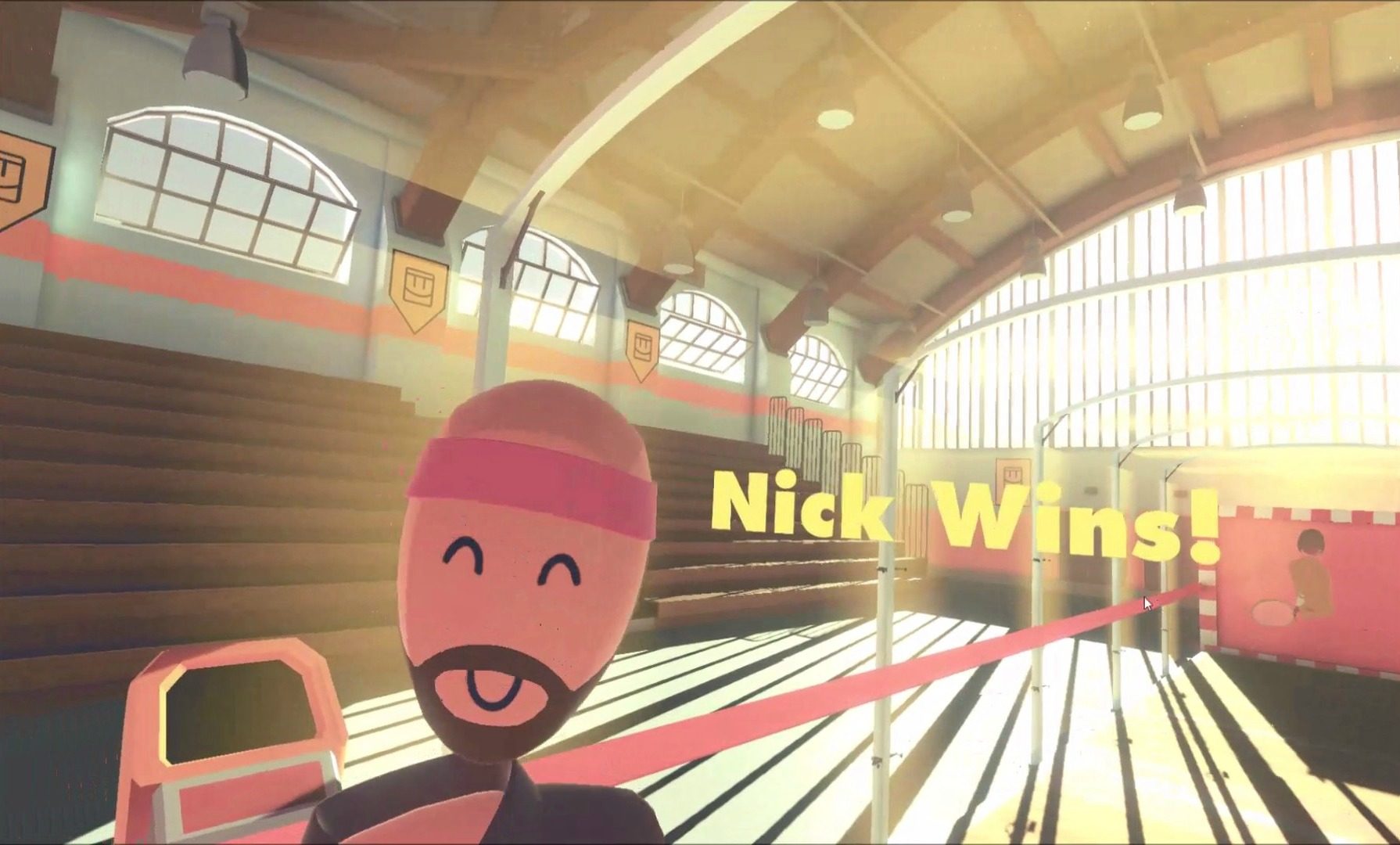Rec Room is a new social VR platform for HTC Vive from indie studio Against Gravity, and as a project currently in Early Access for the low low cost of absolutely free, it’s quickly becoming a success on Steam. At the time of this writing, more than 100 Steam reviewers gave the game a thumbs up, making for a perfect ‘100% positive’ aggregate rating. But why are people walking away from Rec Room with ear-to-ear grins?
Much like the highly rated online billiards game Pool Nation VR released last month, Rec Room presents the user with a melange of fairly simple leisure sports ranging from disc golf to dodgeball. And while neither game offers a perfect representation of their real world counterparts, the fun to be had is both very real, and very dependent on the shared nature of the experience.
Both are extremely well-executed and uncommonly fun, hitting a sort of sweet spot between chatroom and online multiplayer game that effectively lets you kick back at any moment for an extended talk, or engage in throwing shit at each other at full blast; but Rec Room is different from Pool Nation VR in one important aspect, and it comes down to the smile plastered on your virtual face.
Materializing into the game’s YMCA-style starting room, I was greeted by a gaggle of cartoonish avatars tossing balls back and forth, playing ping pong, messing about with water bottles and even assaulting a punchable dummy. People were giggling and waving, and everyone seemed to be having a great time.
Walking up to a mirror near the changing room—a place where you can customize your avatar’s hair, fashion, etc—I looked to find a toothy grin pasted where my ‘bitchy resting face’ actually stood IRL. And that’s when I noticed that the whole room was actually cycling through a torrent of emoticon-style facial expressions, all of them infectiously cute or infectiously happy. Either way, I was infected.
The developers behind the social VR app told us they use a number of variables to generate the cutesy avatar facial expressions, including the user’s audio output, body language, proximity to other people, objects they’re holding and using, and the things that are happening to and around them—creating strings of facial expressions based on almost every data point they can collect. So while the simple emoticons-style faces aren’t in any way based on your own real facial expression, and are ostensibly fake, it still doesn’t seem to stop your brain from feeling all the good vibes anyway.
Cartoon Monkey See, Real Monkey Do
According to a 2014 study published in the journal Social Neuroscience, people were observed to repeatedly process right-side up emoticons in specific sites across the occipitotemporal cortex, the same parts of the brain that lights up when we see real human faces—proving that even a basic drawing of a face is good enough to fool the brain.
In a 2007 study from the same publication, this time trying to understand how we subconsciously mimic others’ human facial expressions, subjects were put in an fMRI machine and shown pictures of people exhibiting a range of basic emotions. The study concluded that just seeing facial expressions—happy, sad, angry, etc—activates “a wide network of brain regions that were also involved in the execution of similar expressions.” So when we see a person smile, our brain tells us “Smile, you schlubby turd!”

While there aren’t any specific studies that link the two phenomenon—humans internally mirroring a cartoon’s facial features—anyone who’s ever bawled their eyes out watching a Pixar movie can attest to both the relatability and sheer power of cartoons.
However if we did make the logical jump to correlate the two studies, it would hypothetically boil down to is this: because your face in Rec Room transmits positivity, this predisposes the entire platform to have a positive gut reaction to you, the user, essentially engineering the entire experience to be positive by default.
Get Rec’ed – The Road Ahead
Despite the clever social engineering, not everyone is walking away entirely happy with the experience. Harassment is an ongoing issue in social VR, and because platforms like Rec Room and Altspace VR allow a high amount of physicality, trolls are bound to ruin even the most determined player.
The same physical agency that lets us fistbump, high-five and toss balls around necessarily makes way for some of the most annoying behavior on the Internet. It only took a single person to teleport behind me, cover my eyes with their hands and grunt a string of insults into my ear to underline the gravity of the situation. Now, I won’t conflate the incident any more than what it was, stupid and annoying, but that same person went on to run around the room, clip through other avatars and wave objects in people’s faces to no end. A real asshole if I ever saw one.
So how does Rec Room deal with these malefactors? Absolute Gravity told us their take on it:
“To be honest, Mute and Ignore are not sufficient [ways of dealing with trolls]. Nor are they as easy to discover and use as they need to be. So in the coming weeks we’ll be rolling out numerous improvements and experiments in this area. First, we want to set the tone – Rec Room is open to people from all walks of life, and is a place for fun, sporting conduct, and intense but respectful competition. Second, we want to put users in charge of their own experience via functions like Mute, Ignore, and more. Lastly, and this is an area where we will tread carefully, we want to give the community, as a whole, the ability to moderate behavior. We think of this as a process of learning and tuning over time, not something where we can just ship an update tomorrow and have it be magically perfect.”
New versions of Rec Room are said to roll out on a weekly basis including new features, new items and new activities. The devs maintain that muting and blocking offending parties will still be on the menu, but they’re emphasizing the Bill and Ted golden rule of “be excellent to each other” as they move forward. Bans aren’t out of the realm of possibility either as the devs dial down further to create what they hope will be “the best Social VR experience.”
Until then, I’ll be smiling whether I want to or not—although everyone does seem a little nicer because of it.

